Publisher’s note: The Texas Lawbook is pleased to offer this new column in partnership with Texas-based Half Price Books sharing our readers’ favorite reads. “My Five Favorite Books” will publish every other Wednesday. Please email brooks.igo@texaslawbook.net for more information.
I have a secret hobby that only my close friends know: I advise high-school seniors (and younger students) about college admissions, including helping them create a list of schools that would be good fits for their interests and aspirations as well as their family’s pocketbooks. This unpaid side-gig started years ago, when my oldest daughter began high school and I decided to try to “hack” the college admissions game. I don’t mean that I plotted to get her into a U.S. News top 10 school — no, I defined “winning” as finding a school that would allow her to flourish in college, set her up for success after college (success as defined by her, not me), and be somewhere our family could afford on what was then two government salaries. I am still rather stunned to admit that we “won” — she attends a school that is a size she likes, has a warm and involved team of professors in her major field (theatre), is in a city she enjoys exploring and will be the base for her career launch after graduation, provides realistic pathways to paid work in her field, and is teeming with kids like her, several of whom have now become her friends, study buddies, improv teammates, and support network.
Not to bury the lede — my daughter’s college is not even in the top 100 on the U.S. News list. In fact, she turned down admission to three schools that were on that list to attend her current college. My second daughter is now a high school senior, and her first and second choice schools likewise aren’t in the top 100. Why did they make these decisions, or, as you might be wondering, why did we “let” them? Because of the books I describe below, which opened my eyes to what we — nervous Type-A lawyers who would do anything to set up our kids for a “good” adulthood — should be considering in the college search rather than simply deferring to college rankings, none of which takes into account the specific characteristics of an individual student or what she or he wants out of college and beyond. I recommend that you read these books, too, as I bet they’ll cause you to relax about the process and also provide criteria to help you and your student find the school that’s the best fit for them and comes at a price you can comfortably afford.
For more information or to purchase the books, click the covers below.
1. Where You Go Is Not Who You’ll Be: An Antidote to the College Admissions Mania (2015) by Frank Bruni
Bruni — who has written for The New York Times since 1995 — authored this book 10 years ago, but it’s still relevant to today’s high school set. The title and central theme sprouted from Bruni’s own experience of getting into Princeton but deciding to attend the University of North Carolina-Chapel Hill (which, when he applied, was less selective than it is today).
He begins by shattering the myth that a certain school can determine a student’s success, by reviewing lists of CEOs, Rhodes scholars, and well-known professionals and noting the huge diversity of schools they attended. He also emphasizes that it’s much more difficult to get into popular schools than it was when we (largely Gen-Xers) were in high school because more kids are applying to college and each student is applying to a higher number of schools than before thanks to the ease of the Common Application and colleges’ aggressive marketing campaigns to drive up application numbers (which, in turn, ups their place in the rankings).
This means that no one should count on admission to any of the most selective schools, and families should try to prevent their kids from setting their hearts on a highly selective school. He also explains the advantages of applying to a less selective school, noting that, for at least some of these colleges, accessibility is the mission — these schools purposefully compose their student bodies differently in terms of the range of academic records and socio-economic backgrounds than do some “elite” schools — and this can be a very good thing for your student because these colleges are designed to academically support and offer enrichment opportunities to a broad range of students.
Bruni also makes the point that honors colleges at higher-admit schools can be a great mix of both worlds, and a large array of schools — not just large state schools — now have honors colleges. (My daughter, in fact, is in the honors program at her mid-sized private college, and it has allowed her to have honors housing her freshman year, priority registration, and small classes that delve deeper into certain subjects than do the general courses on that topic.)
Bruni knits together all of these points to create an overarching theme: For the most part, it doesn’t really matter where your student goes to college — what matters is whether they take advantage of the opportunities afforded them there. And that should comfort any parent or relative concerned about whether their student should take the ACT one more time to get a better score or whether 10 AP courses is really enough to get them into a “good” school.
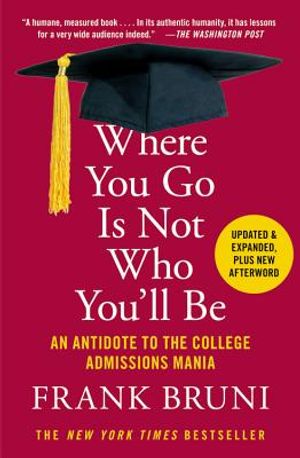
2. Who Gets In and Why: A Year Inside College Admissions (2020) by Jeff Selingo
For 16 years, Selingo was the top editor of the Chronicle of Higher Education, so he knows the college admission game better than most. For this book, he did something extraordinary, gaining access to the admissions departments of three schools — Emory University, Davidson College, and the University of Washington — to observe over the course of an admissions cycle how admissions officers made their decisions and the common themes he could share with families to help them better understand what considerations come into play in these decisions.
His key takeaway: There is no predictable formula — like valedictorian, 36 on the ACT, and all AP courses — that a student can follow to get into highly selective schools. This is because those schools get so many students with these credentials that they can’t accept them all, and because other factors are at play, like the need to fill the school’s sports teams, legacy status, whether the family can pay full price (colleges that consider a family’s ability to pay are known as “need aware”), likelihood of enrollment if accepted, and the need to fill seats in all of the school’s departments.
More broadly, Selingo breaks colleges down into two categories that every family should understand — buyers and sellers. Sellers are “the ‘haves’ of admission”; they have something to sell that consumers want, like a brand name, and their admissions officers are gatekeepers who only allow certain select students in. Buyers are the “have nots”; they might actually provide a superior undergraduate experience and education, but they aren’t as well known, so admissions officers work to recruit students.
He explains that this distinction matters for two reasons. First, it’s increasingly difficult to get into the haves. That means if students only have sellers on their list, they risk not getting into any college. Second, sellers typically do not offer merit scholarships or other non-need-based aid because most families who can find a way will pay full price.
His ending advice, which I have applied in both my daughters’ college searches, is to construct a potential list early on in the search process that is filled with at least some buyers, which are both affordable and appear to be good fits for your student.
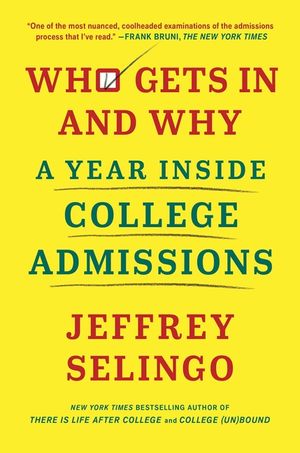
3. The Price You Pay for College: An Entirely New Road Map for the Biggest Financial Decision Your Family Will Ever Make (2021) by Ron Lieber
Lieber knows finances — he’s written the “Your Money” column for The New York Times since 2008. He focuses on five financial topics critical for families to understand: (1) Why the price of college is so high (it’s labor costs, not lazy rivers in recreation centers), and how the FAFSA works; (2) why you might feel the need to send your student to the most exclusive university regardless of price, and why you need not feel that way; (3) what to look for in a college that, in his view, is worth paying for; (4) alternatives to traditional four-year college experiences and whether, in his research, they’re worth it; and (5) nuts-and-bolts college financial planning, including crafting a budget for college and discussing it with your student, saving for college and 529 plans, appealing financial aid awards, and considering whether to take out loans to cover part of the cost.
The broad array of topics Lieber covers within these sections include honors colleges within larger universities, women’s colleges, community colleges, small versus large schools, non-U.S. universities, athletic scholarships, and military academies.
His discussion of gap years and their benefits was a big reason why we supported our oldest daughter taking a gap year, which allowed her to immerse herself in the Dallas theatre community to understand how it worked and how she could use her skills to generate income in that field. It also allowed her to practice adulting — like managing her bank account and credit card, working a series of theatre- and non-theatre-related jobs, and setting doctor’s appointments and picking up prescriptions — before moving 14 hours away from us to embark on her college journey. Now a college sophomore, she adjusted to college life in a major city without missing a beat, and we believe Lieber’s insights on all aspects of the post-high-school experience played a large role in her success.
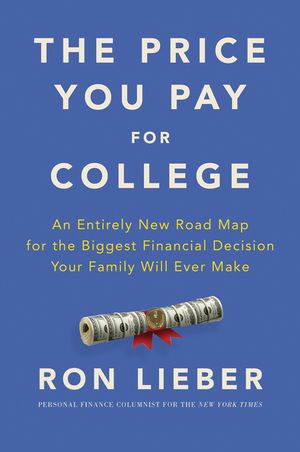
4. Dream School: Finding the College That’s Right for You (2025) by Jeff Selingo
In his most recent book, just released in September of this year, Selingo uses the information he learned about college admissions in Who Gets In and Why to outline how a family can go about finding schools that a student can realistically get into and that provide an undergraduate experience that is fulfilling and sets up the student to achieve whatever goals she or he has post-college.
The bulk of the book focuses on a concept key to crafting a college search not wedded to U.S. News or other popular rankings — “dream schools” that are often overlooked by families but that data, including metrics like graduation rates, salary after graduation, and student feedback on various aspects of their college experiences, show provide at least as good of a college experience for many students as more selective, “name-brand” schools.
Part of this discussion takes place in a lengthy appendix that lists what he calls “the ‘new’ dream schools” — schools that scored high in several important metrics and also tend to be more affordable and easier to get into than other colleges typically on families’ lists. He stresses that this list is non-exclusive and that his discussion of each school is meant to showcase aspects of a college that he finds especially important or unique so that, when families are researching and touring schools, they can look for those elements, too.
He breaks the list down into three categories: “hidden values” (like Bentley College outside of Boston); “breakout regionals” (like Marquette University in Milwaukee); and “large leaders” (like Colorado State University) — and he highlights “standout factors” for each, like high graduation rates and strong pre-professional advising. This discussion of specific schools is reminiscent of Colleges That Change Lives: 40 Schools That Will Change the Way You Think About Colleges by Loren Pope and Hilary Masell Oswald. First published in 1996, this list of geographically diverse colleges has evolved over the years and morphed into a formal collection of featured colleges — including Austin College in Sherman and Southwestern University in Georgetown — that hold their own college information fairs around the country.
By providing real-life examples of alternatives to the schools highest on rankings lists, both of these books should help any family trying to understand how colleges differ and what aspects might seem important for your student to have in a college.
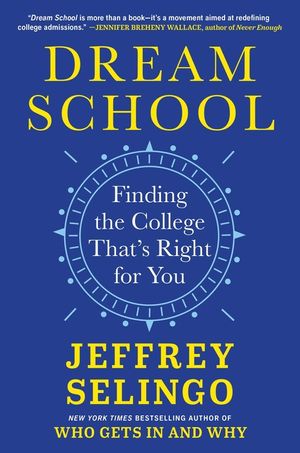
5. Fiske Guide to Colleges (any recent edition) by Edward B. Fiske
By now you might be asking, “Is there a reliable, well-researched guide that will tell me and my student about specific schools that might be a good fit according to some of the criteria these other books mention”? This is where Fiske’s Guide comes in.
While serving as The New York Times’ education editor, Fiske first published this guide in 1982, and it’s now in its 41st edition — but any relatively recent edition will do. Touted as the best-selling college guide in the United States, it provides overviews of around 320 schools in alphabetical order, and it also breaks them down by state, price, average debt, size, and academic program.
Each school’s description includes ratings for price, quality of academics, and quality of life. And if a college’s description sounds good, the guide helpfully supplies a list of similar schools that students could also consider. Fiske’s guide is more objective that some others, which provide universally positive summaries of each school instead of discussing pros and cons.
This is my go-to resource when I want to learn more about a college that’s just hit my radar.
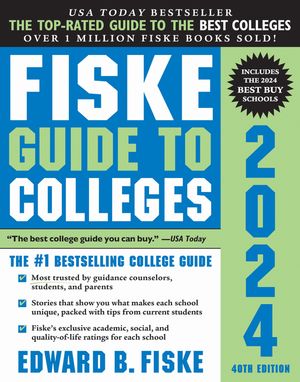
I cannot overemphasize how much these books have shaped our family’s approach to the college search and application process. And now, in my “free time,” I meet with my friends and/or their kids to discuss some of these things along with examples of colleges that might be good fits and within their budgets. I also stress making a balanced list that includes affordable schools with over 50% admission rates that their students can be excited about.
Not only is this information valuable in the college search, it can make a student’s high school experience less stressful and more enjoyable. Whenever, despite their efforts, my kids make a grade that disappoints them or have a lower class rank than they were shooting for, I remind them: “We’ll find a college we can afford that’s a great fit for you.” Their expression softens, and their sense of relief is often palpable. And that permission I give them to ease up on themselves is worth more to me than any grade on a transcript.
For more information on the current list of Colleges That Change Lives, visit https://ctcl.org/.
To find data on specific colleges, the advisors at Big J Educational Consulting have complied a free, searchable list of schools that contains several metrics, including average merit aid per college: https://www.bigjeducationalconsulting.com/resources
Leigha Simonton was the United States Attorney for the Northern District of Texas from 2022 to early 2025 and is now a partner in the Dallas office of Dykema Gossett PLLC, where she leads the largest concentration of former high-level DOJ attorneys in Texas. More importantly, she is the mother to three great kids, ages 20, 17, and 14.

